"Let no one read me who is not a mathematician." [Da Vinci]

The Bodleian Library at Oxford University proves once again that nothing in life is either easy or as it at first seems. The full manuscript section tends to have either minute 20kb thumbnails that are virtually impossible to view or >10Mb juggernaut files that have crashed my browser, image program and computer on a few occasions in the past.
So it was with some trepidation that I went back recently because, you know, it's Oxford University (!) and of course home to one of the world's greatest manuscript collections so I have to visit.
The above image on first blush is simply the bookplate on the inside cover of an early 16th century version of 'The Annals of Ulster' {MS. Rawlinson B. 489} - a chronicle of medieval Ireland from 431AD onwards. It's an otherwise unremarkable (in the visual aesthetic sense) handwritten manuscript [transcript] without further embellishment but I thought the knotwork roundel was rather beautiful so I hooked it.
During Leonardo da Vinci's 2 decade tenure with the Duke of Milan he shared both his house and studio with apprentices and pupils but the current thinking, as far as I can tell, is that there never was any true 'Academia Leonardi'. Da Vinci (and Albrecht Dürer) was particularly taken with the geometrical flavour of interlaced designs (see here, here, here, here, this pdf and possibly best: this spanish page [translation]).
"The earliest record we have of a connection between the title 'academy' and fine art is the inscription 'Academia Leonardi Vini' which appears on six Renaissance engravings, including the complicated knot roundel in the British Museum. The inscription may not refer to an art academy, but to an intellectual circle which met in Milan. Ludwig Goldscheider suggests that the engravings were admission or prize tickets for scientific disputations."In other words, I don't really know the specific origins of this bookplate for certain - I couldn't pin down anything much on the provenance of the manuscript - but the potential backstories kept me entertained.


The great Aztec Sun Stone (12 feet in diameter) was unearthed in Mexico in 1790 and remains one of the most remarkable vestiges of the Aztec Empire ever found. Mexican historian Antonio de León y Gama was a vocal protagonist for the notion that pre-columbian societies were much more advanced in matters of science than had previously been reported in Europe. He published a monograph in 1792 reporting the find and correctly recognized a sophisticated calendar depicted in the stone work. Title: 'Descripción histórica y cronológica de las dos piedras que con occasion del nueve empedrado que se está formando en la plaza principal de Mexico.' {The first image above from the same work was snagged from the Library of Congress but they have no other images}
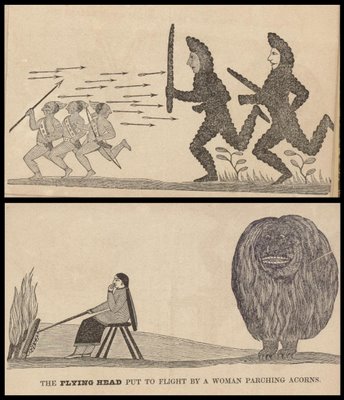
'David Cusick’s Sketches of Ancient History of the Six Nations' was published in 1828. It was the first account of Native American history and folklore written by an American Indian. There is continuing controversy about the extent to which Cusick may have compromised his Iriquois heritage in favour of negotiating a path through contrasting tribal views at a time of massive historical upheaval. Beyond this, the book has been touted as an early influence on Mormonism and as an origin for the Big Foot mythos. The Library of Congress version is missing a couple of illustrations that I think were issued in later editions. [The top illustration is called 'The Stonish People']
The Aztec and Cusick prints were originally found in The University of Pennsylvania Library which have an excellent exhibition site from a couple of years ago: 'Cultural Readings - Colonization & Print in the Americas' that had managed to slip under my radar previously [click everywhere, there is a lot in there].
I was also led to another exhibition site put together by a few institutions from last year: 'Vistas - Visual Culture in Spanish America 1520-1820'.

13th century medical instruments from 'Kitab al-Tasrif' by
the 10th century Andalucian doctor Abu al-Qasim al-Zahrawi.
the 10th century Andalucian doctor Abu al-Qasim al-Zahrawi.
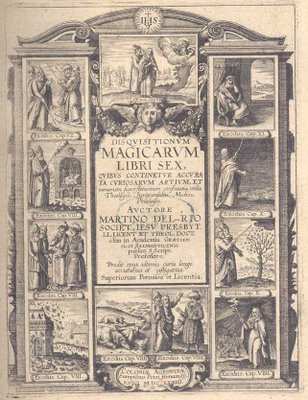
Titlepage of the 1599 'Disquisitionum Magicarum Libri Sex' from the much maligned Jesuit polymath and demonologist, Martin Del Rio. "The book is divided into six parts which deal with: magic in general, diabolical magic, maleficia, prophecy and divination, rules for judges, function of the confessor." It came to augment or replace the infamous 'Malleus Maleficarum' as a source book for justifying/prosecuting witch trials.
The above 2 images were found somewhere in the exhibition section of the University of Leiden.
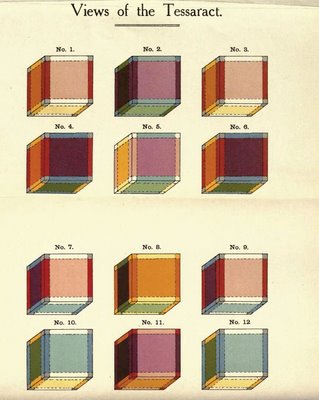
Banubula recently contributed Charles Hinton's 'The Fourth Dimension' from 1906 to the Internet Archive. Hinton allegedly devised a system whereby the fourth spatial dimension could be visualized, as Banubula explains.
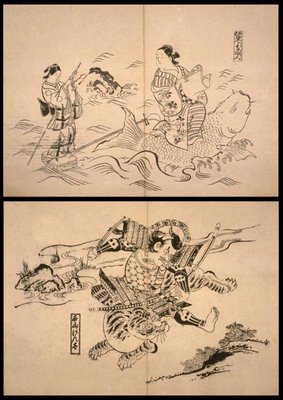
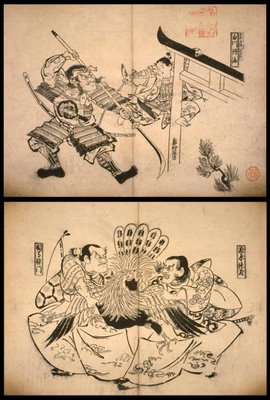
My lack of japanese and the architecture of the National Diet Library's digital collection website mean I can't link directly to this ukiyo-e book. The only reference I have is 'wa31-11'. In lieu of a direct link, check out the wonderful Japonismeblog from Lotusgreen.
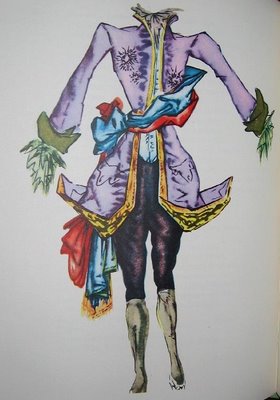
There are a few lithographs by Salvador Dali accompanying
Shakespeare's 'As You Like It' from 1953 on this ebay page.
Shakespeare's 'As You Like It' from 1953 on this ebay page.
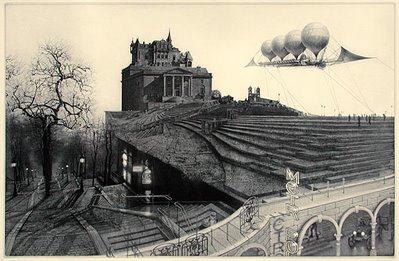
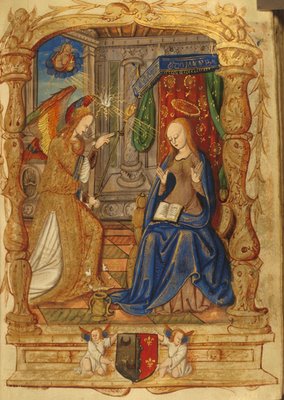
This is probably the most interesting and best quality digital image from a french 15th century Hours of the Blessed Virgin Mary manuscript. 'The Boddam Hours' was produced in Rouen and is hosted by the University of Wales Lampeter Founder's Library.

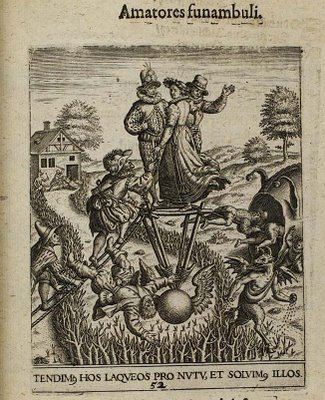

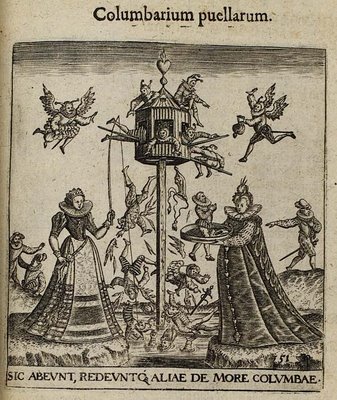
'Proscenium vitæ humanæ sive Emblematum Secularium' from the printshop of Theodor de Bry 1627 at Herzog August Bibliothek Wolfenbüttel [note the thumbnails menu in the sidebar]. This is an outstandingly odd (in a good way) amalgamation of traditional emblemata iconography with surreal allegorical figures and grotesqueries. Misteraitch has some background and other examples from the bizarre end of the spectrum.
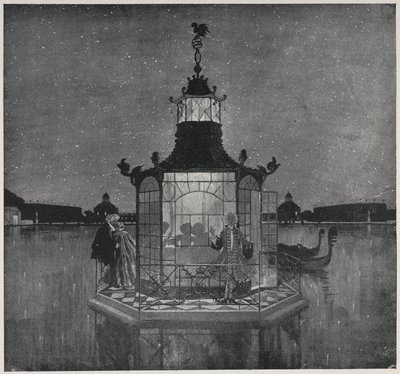
"Kitaiskii pavil'on. 'Le pavillon chinois' ou 'Le jaloux'" [Chinese pavilion] by Aleksandr Nikolaevich Benua {Alexander Benois}, published in 'Zolotoe Runo' 1906 from the excellent database, 'Russian Visual Arts: Art Criticism in Context, 1814-1909', hosted by the University of Sheffield.

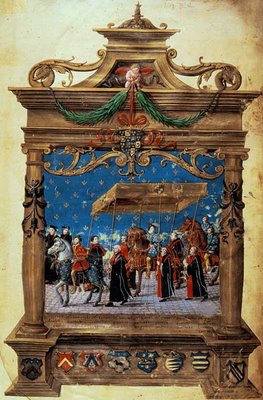
These last 2 illuminated manuscript images are taken from 'Les Annales manuscrites de Toulouse', a chronicle that was commenced in 1295 but a large proportion of which was destroyed in 1793. A whole assortment of material - maps, photographs, historic legal and political documents, local astronomy history ("Ils regardaient les étoiles") and many other items - are available at Les Archives Municipales de Toulouse. [via Archivalia]



















2 comments :
many thanks pk--you continue to fascinate and inspire.
i finally figured out delicious... if you import bookmarks, the default is private. i haven't found a place to change the default, but i did find out how to manually change each one, so i've started on that.
isn't it interesting how interestinger everything gets when you learn more about them? :^)
That Chinese Pavillion is one of my favorite images. Here it's in colour: http://www.rollins.edu/Foreign_Lang/Russian/benois.html
Post a Comment
Comments are all moderated so don't waste your time spamming: they will never show up.
If you include ANY links that aren't pertinent to the blog post or discussion they will be deleted and a rash will break out in your underwear.
Also: please play the ball and not the person.
Note: only a member of this blog may post a comment.